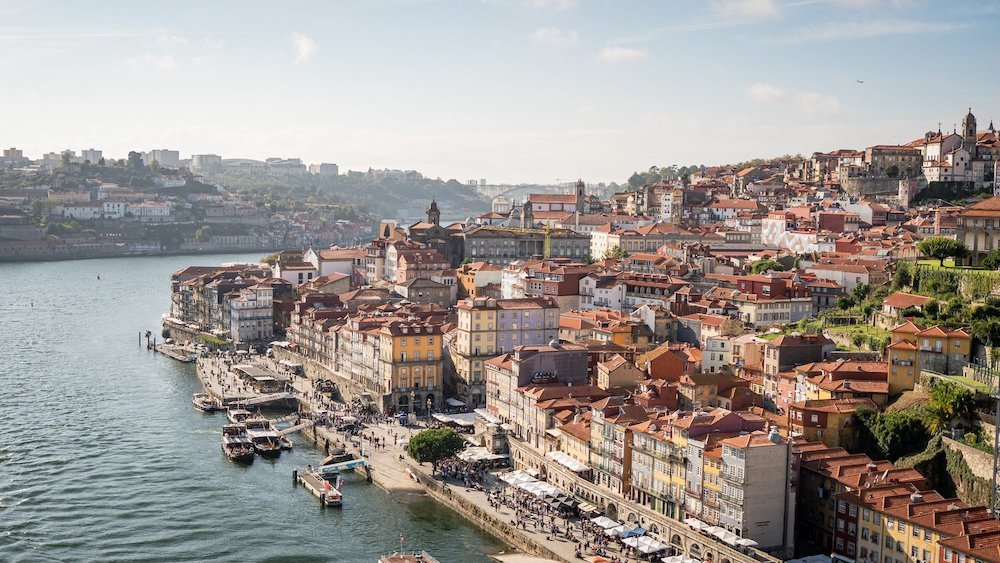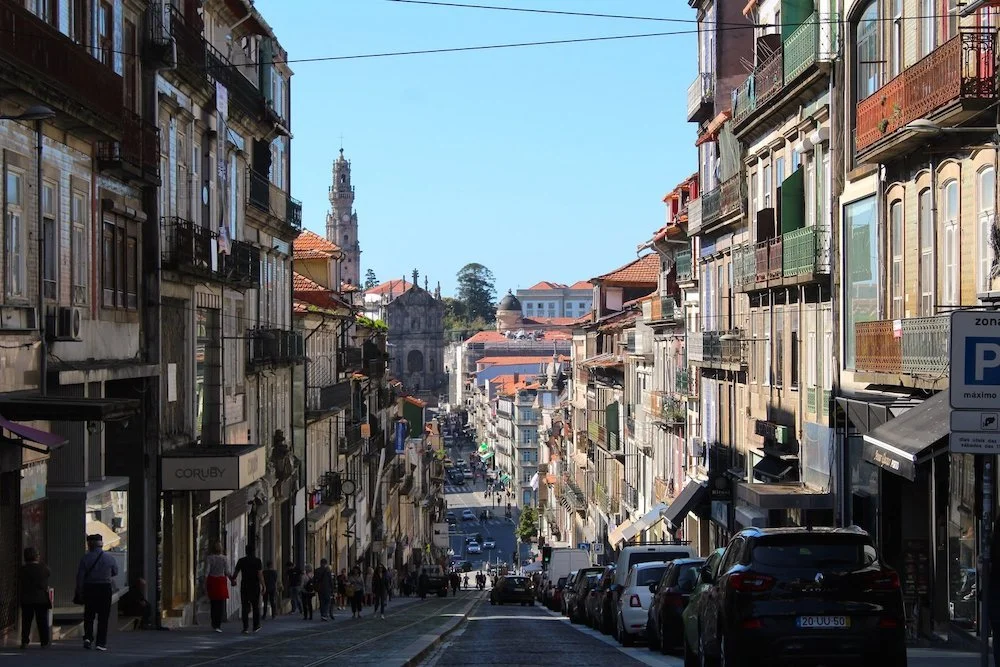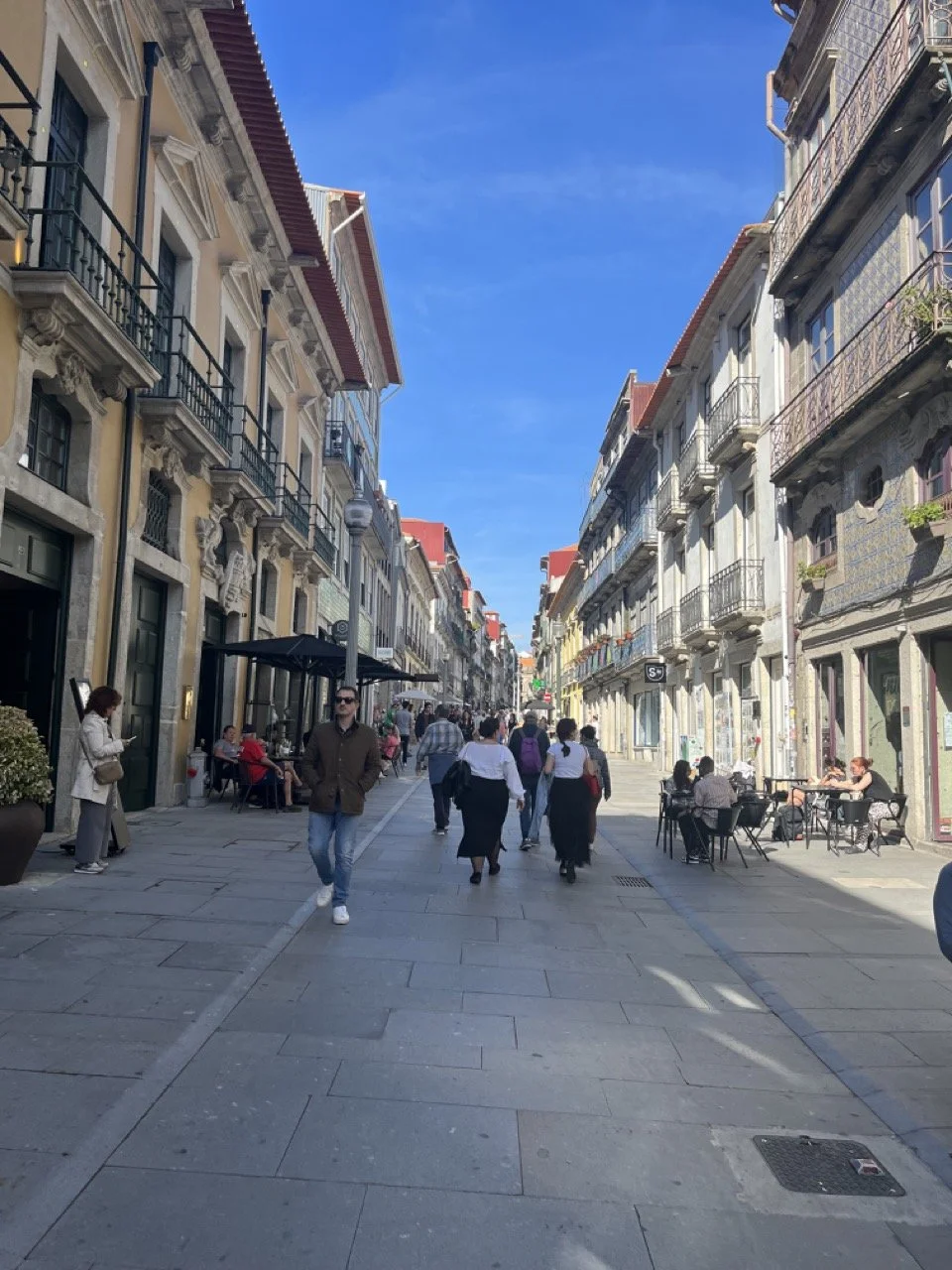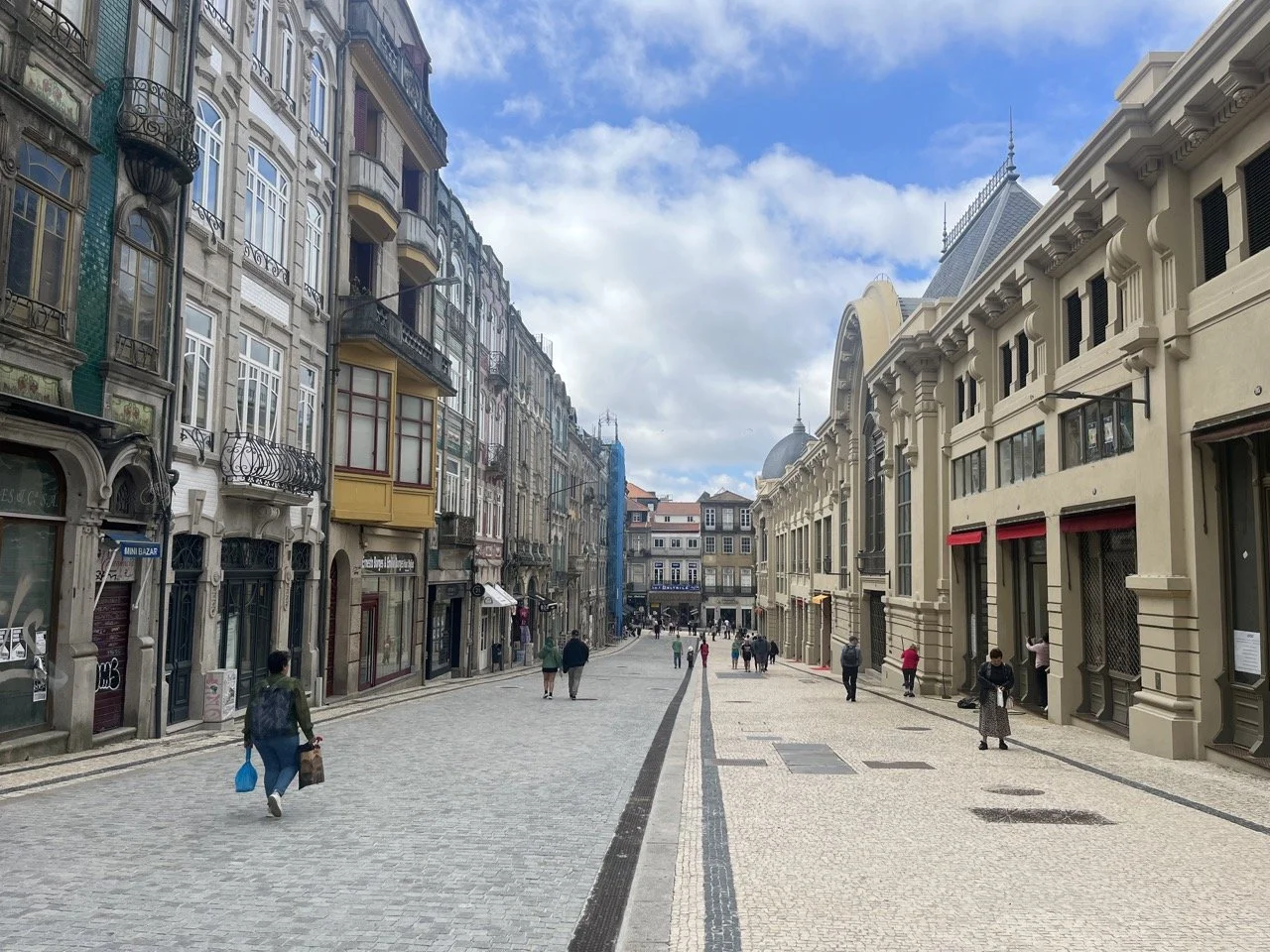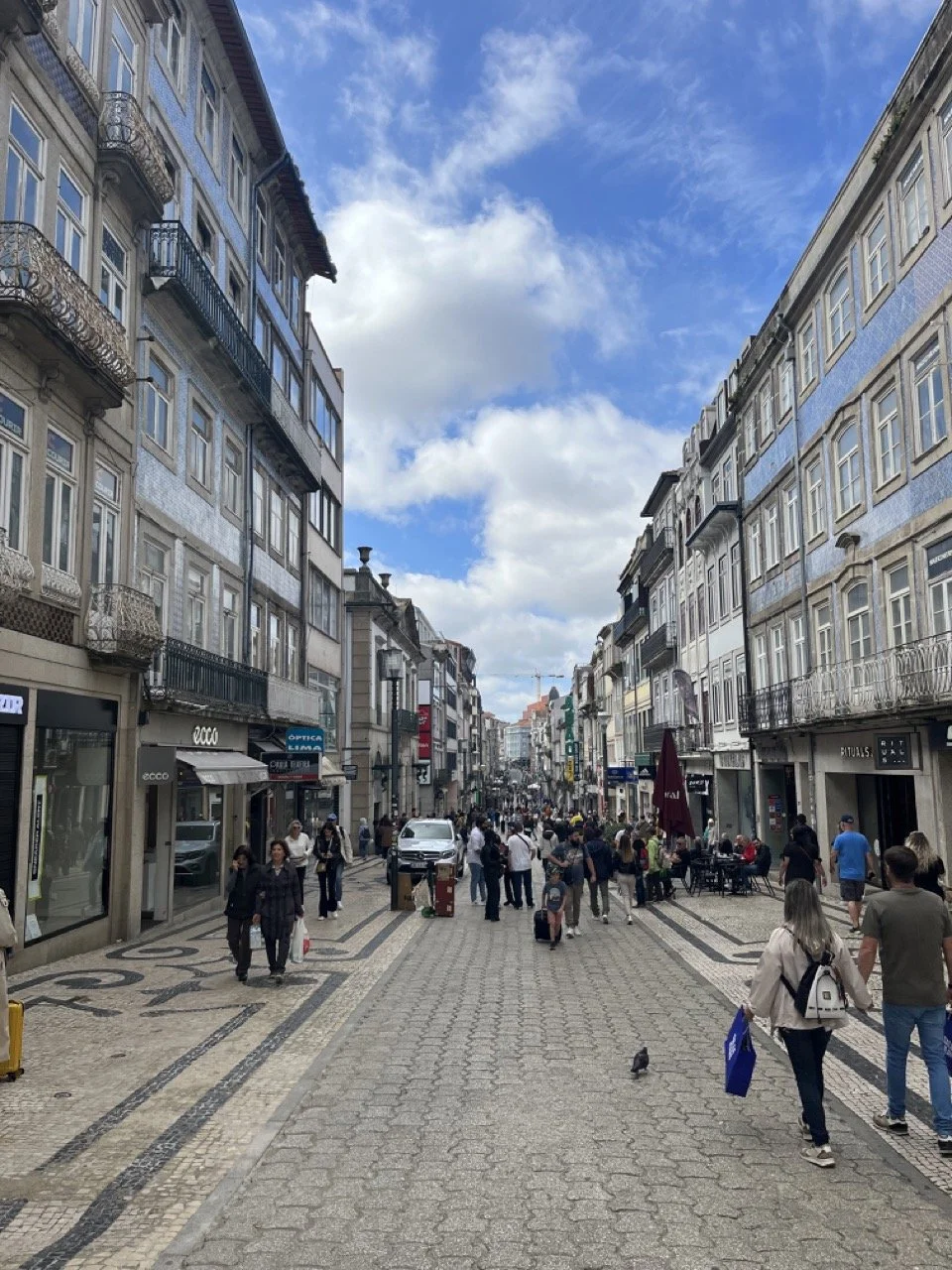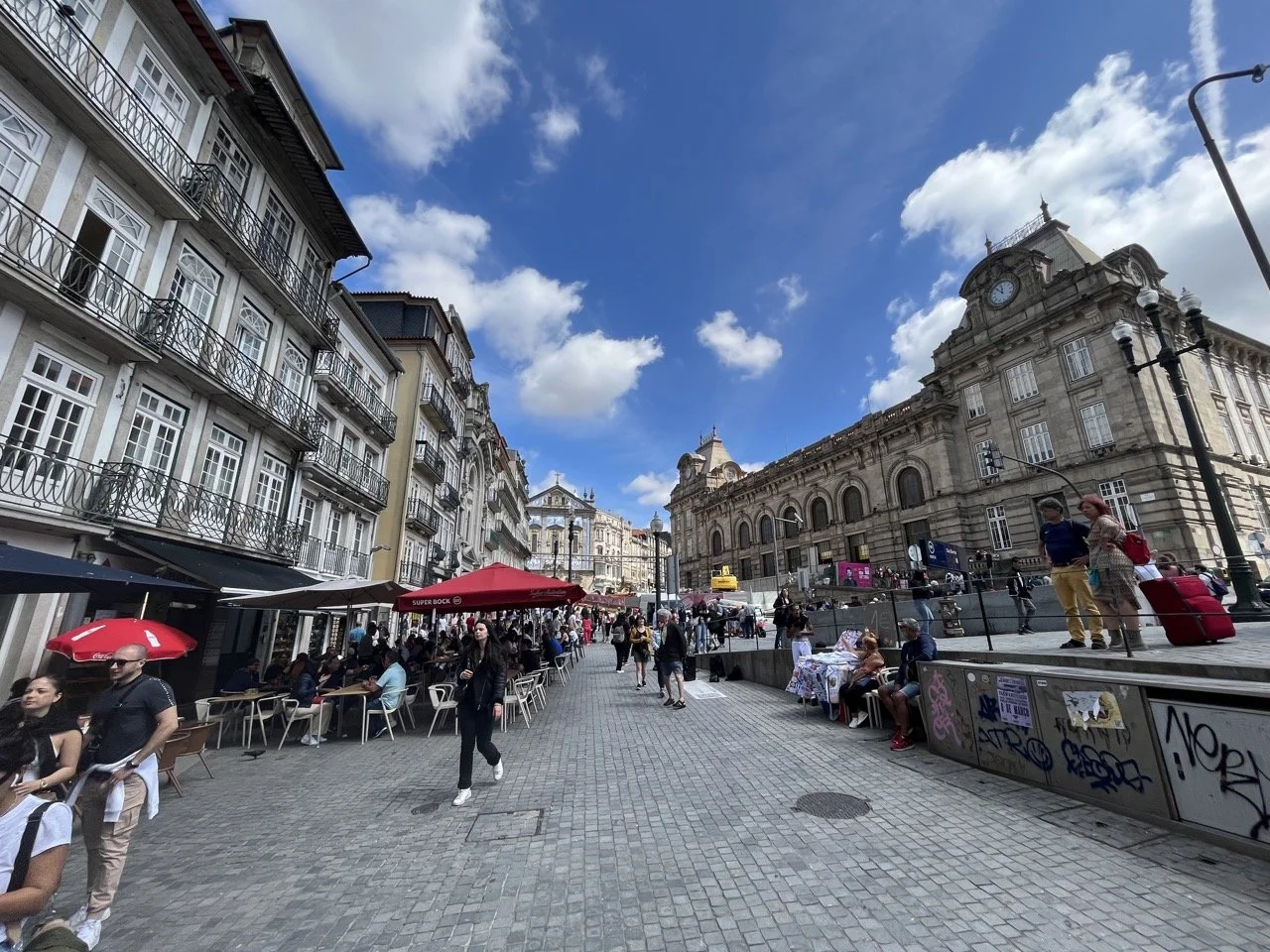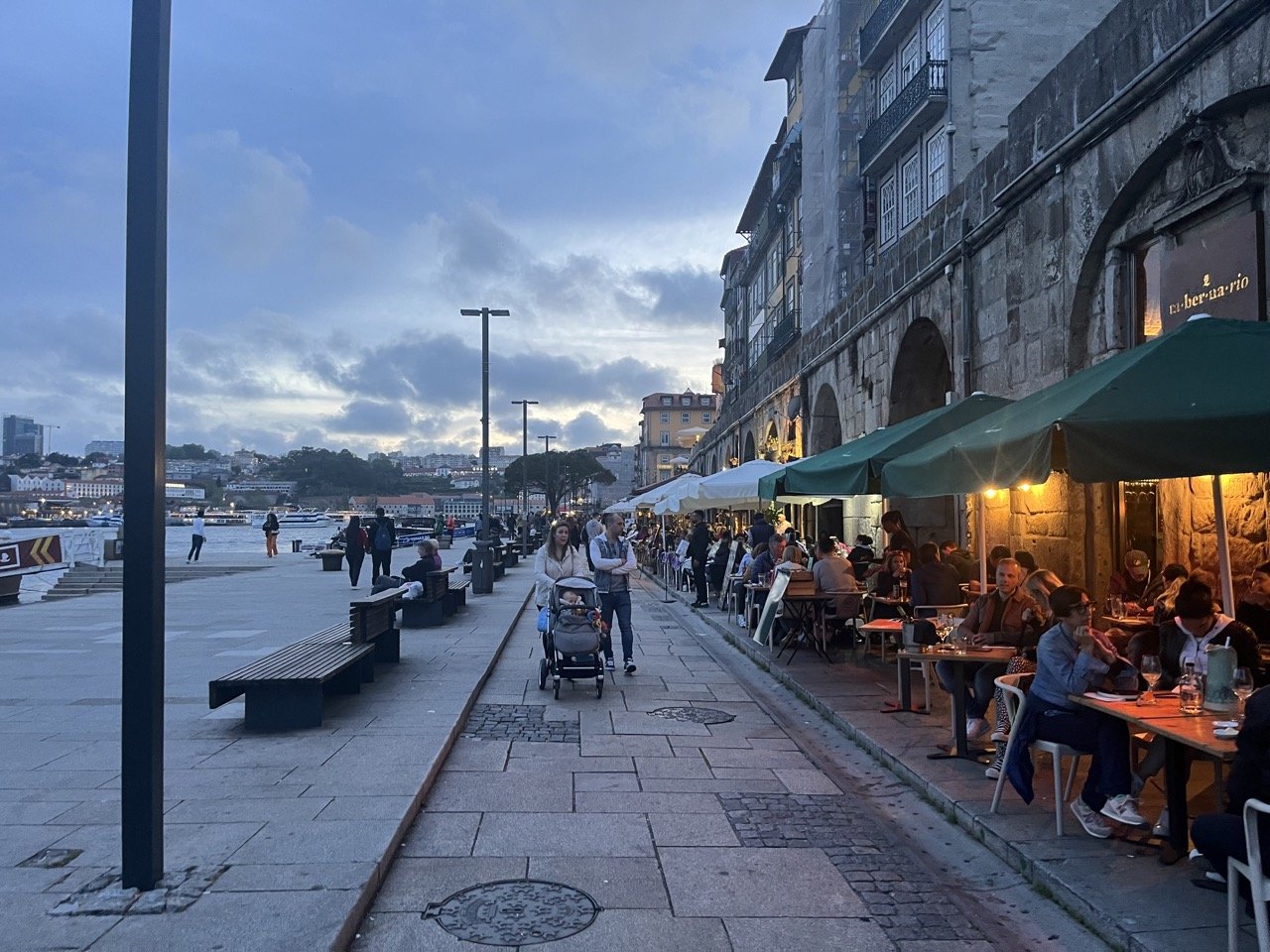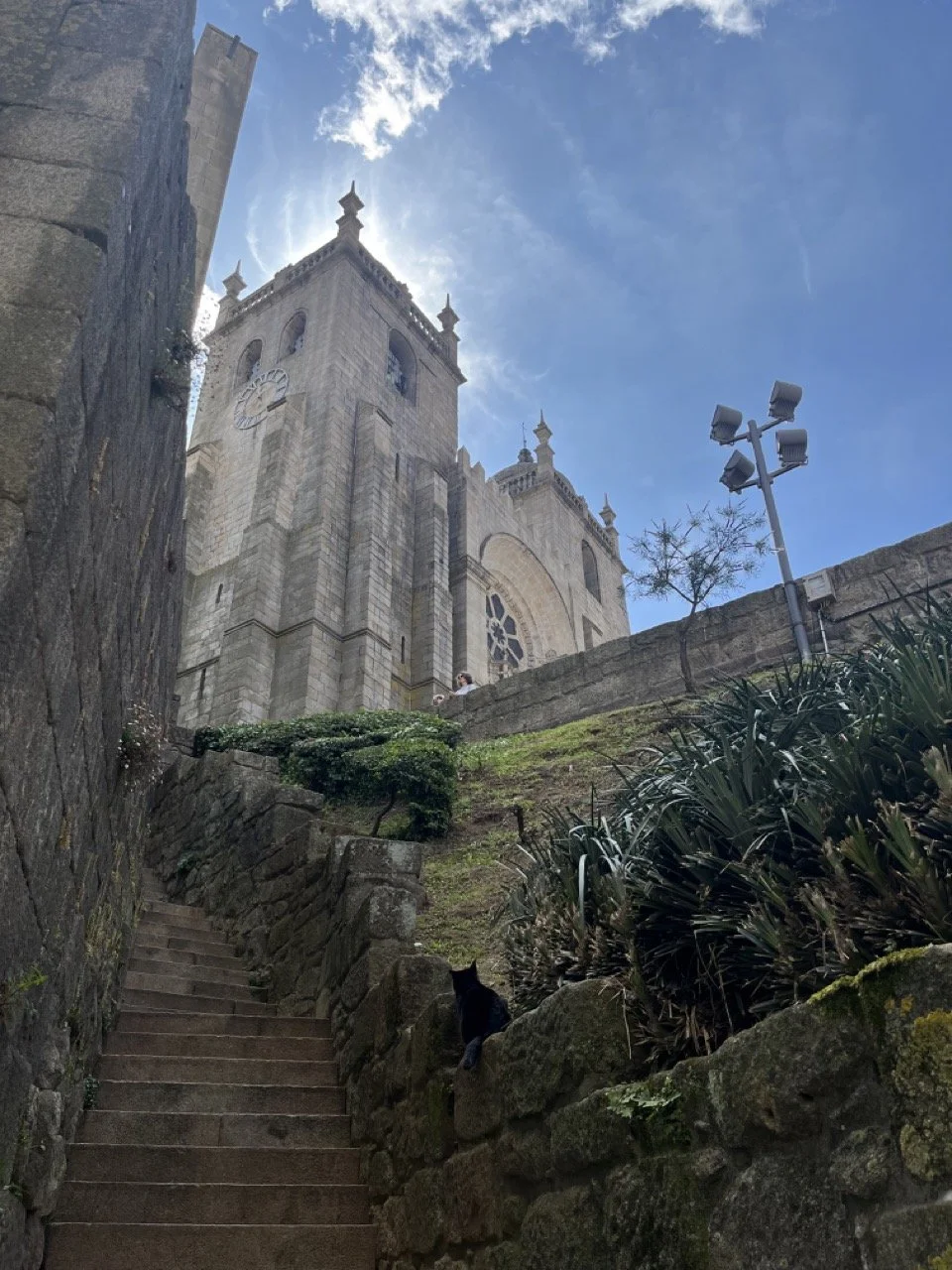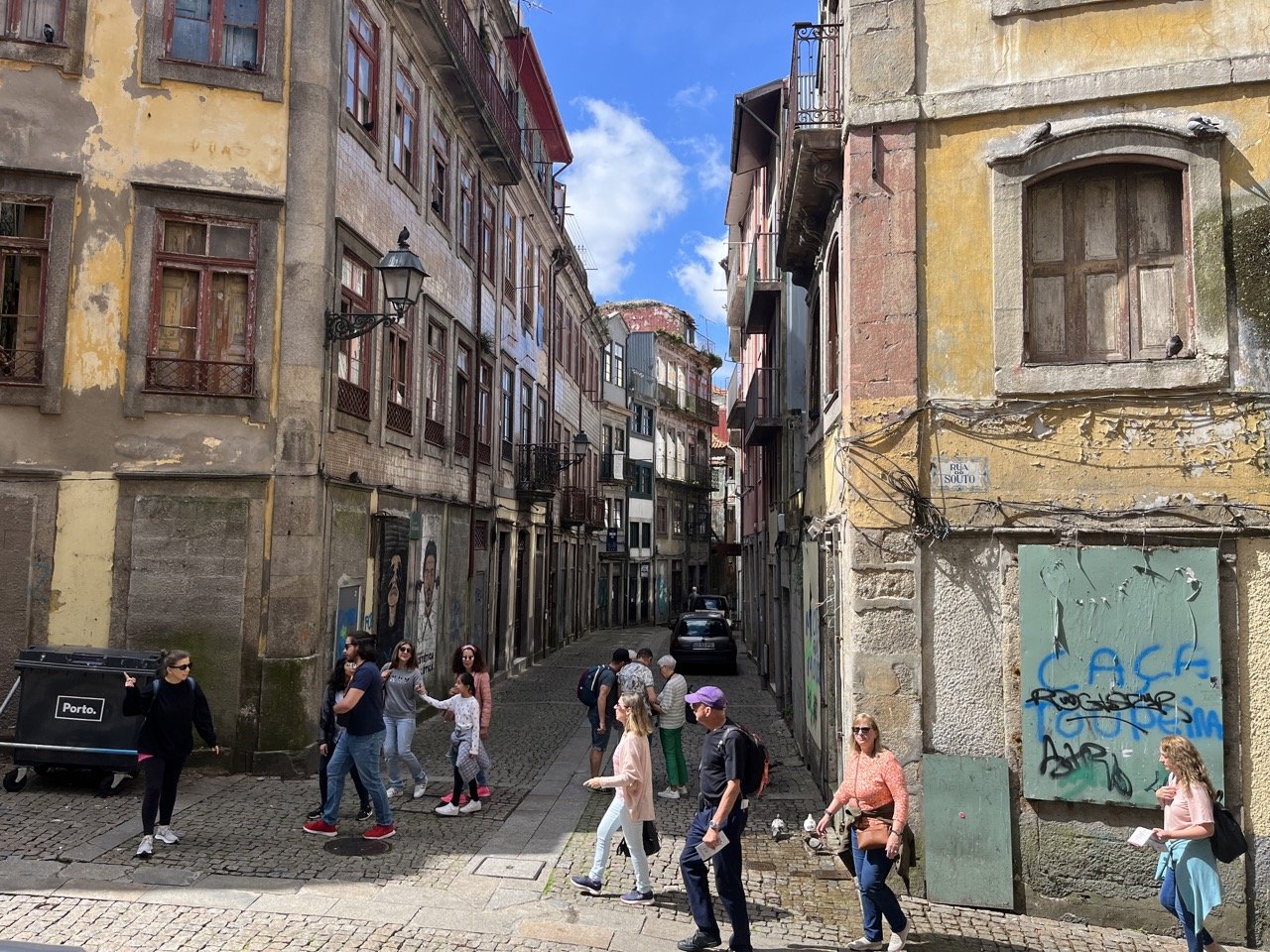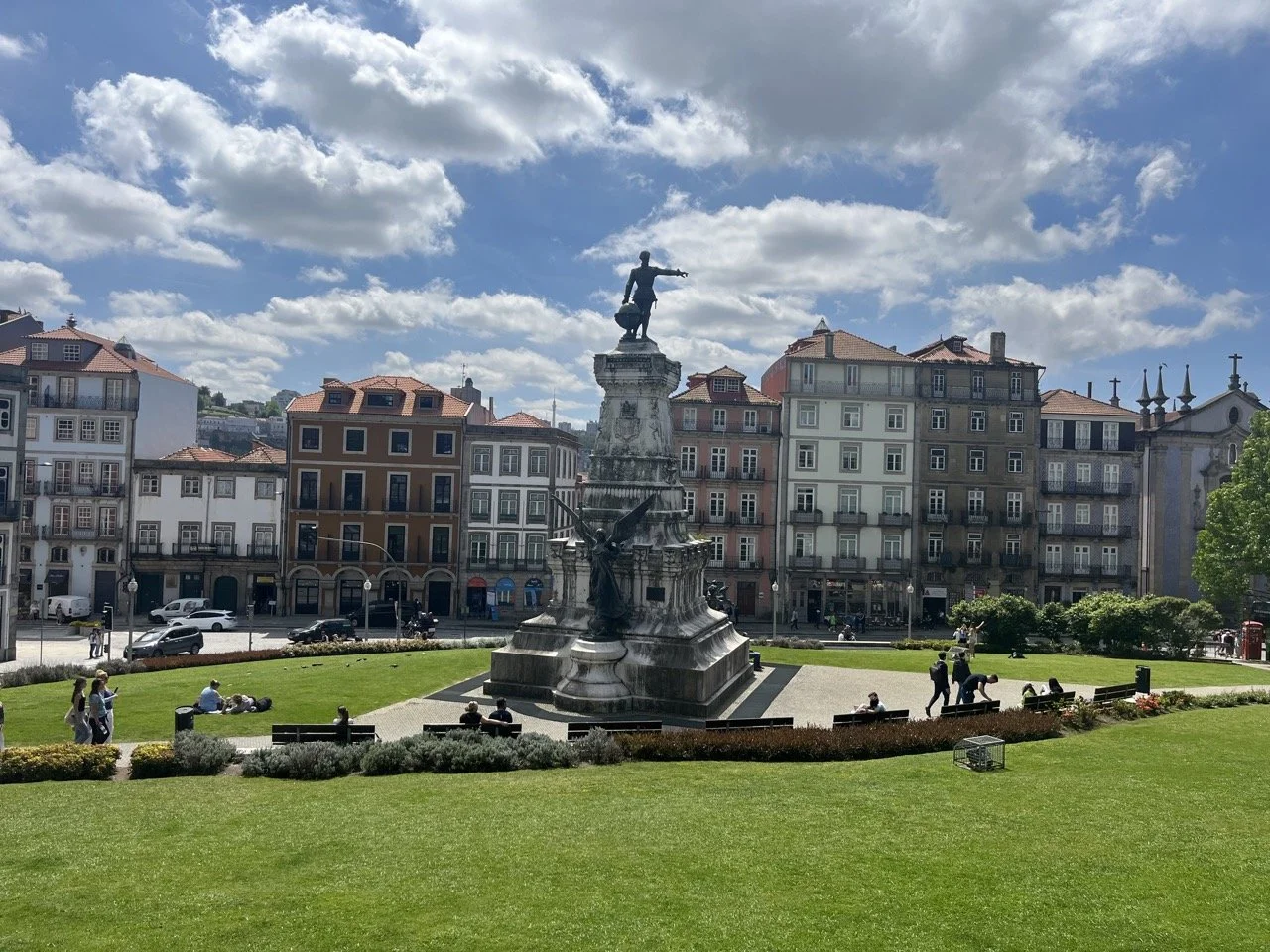Where to stay in Porto - A Local's Neighborhood Guide
As Portugal’s second largest city, Porto is squarely on the map for most international visitors. And with good reason! However, most travelers only spend a day or two here, which doesn’t give you much time to explore the city or to really get a feel for local life.
Because it's likely that you'll have limited time in my city, it's important that you choose a good base.
As you begin to get a feel for Porto and try to figure out where to stay, which areas to visit, and what to see and do, you need to first understand how the city is laid out and where you’re likely to be spending the majority of your time.
Also keep in mind that, despite being a small city, Porto's neighborhoods actually have very different vibes. So aside from just location you'll also want to consider what type of atmosphere you're after.
With that in mind, below I've put together a comprehensive guide to my recommended neighborhoods, along with good hotel options in each of them.
For more Porto planning advice, have a look at a few of our other guides:
Table of Contents
Affiliate disclosure: some of the links in this article are affiliate links. If you book using one of them, we’ll earn a small commission. All of our info is free to read and free of ads, so we appreciate it!
Porto planning cheatsheet
 Plan your itinerary with expert advice
Plan your itinerary with expert advice
- Book a Portugal travel consultation with a local expert
 My favorite hotels in Porto
My favorite hotels in Porto
- PortoBay Flores - 5-star luxury in Clérigos at a semi-reasonable price. $300-500/night
- Vincci Ponte de Ferro - iconic views overlooking Dom Luis 1 bridge. $200-400/night
- The Editory Boulevard - stylish boutique hotel in Aliados & Bolhão. $150-250/night
- Chic & Basic Gravity - colorful, fun, and super central in Clérigos. $200/night
- Hotel Carris Ribeira - riverfront views in the Ribeira. $100-200/night
- One Shot Aliados Goldsmith - cute and great value near São Bento station. $100-200/night
- Oca Oriental Hotel - less central, but my top budget choice. $100/night
 Guided tours and activities
Guided tours and activities
 How to get around
How to get around
- Car rentals with DiscoverCars
- Train tickets from Comboios de Portugal
- Bus routes at Redes Expressos
- Taxis & rideshares with Uber and Bolt
Meet the author
Leonor, the author of this guide, is a Porto-based tour guide and trip planner. She's spent over two decades introducing her city and all of Portugal to guests from around the world.
In addition to writing these fantastic guides, she also offers private Porto tours and Portugal travel consultations.
Overview of my 4 recommended neighborhoods
When visiting Porto, most visitors (especially those with only a few days) should plan to stay within the city center.
The four neighborhoods below are almost always my recommendations for first-time visitors. Each of them is central, historic, and filled with noteworthy sights and attractions, so they are excellent bases for sightseeing.
Yes, they can be a bit touristy, but who cares! If you only have a couple of days here and will be doing a lot of sightseeing, you really do want to stay as central as possible.
Did you come to Porto to see locals doing their laundry at the laundromat and waiting in line at the bank, or are you here to see the beautiful sights of a historic and vibrant European city?
Kidding aside, lovely residential areas such as Boavista and Santo Ildefonso are very pleasant and I think they make a lot of sense for returning visitors or those with more time in the city. But they are far away from the center and staying in them means that you’ll have to rely on public transportation and will lose a lot of time in transit. They don't make sense for most people.
Now, on to my recommendations!
For more info on the city, have a look at our Porto city guide and 3-day Porto itinerary.
1. Clérigos (red on the map)
Clérigos is home to the Lello bookstore, Clerigos tower, Igreja do Carmo and lots of the city's other main sights. It's always lively and packed with people - visitors and locals alike. There’s no question that the area can be touristy, but that’s because it’s beautiful, is within easy walking distance of almost all the main sights, and is absolutely packed with good restaurants, shops, and cafes. It offers a nice balance between busy city life and touristic convenience.
2. Aliados and Bolhão (green on the map)
The absolute center of the city, this is the historic downtown. Here, the narrow hilly streets of other neighborhoods give way to wide boulevards and grand architecture. You’ll find lots of offices, government buildings, and designer shops and department stores. Although few people live here, it’s always busy and in the daytime you'll see politicians, business people, and wealthy visitors wandering the streets, shopping, and dining in the excellent restaurants. It's my top recommendation for anyone who wants an upscale, bustling city vibe.
3. Cathedral district/Bairro da Sé (blue on the map)
If you’re looking for historic charm and a medieval atmosphere, stay in the Cathedral district. Don’t even look anywhere else. It's filled with winding, narrow streets, medieval architecture, and old world charm. The tradeoff is that there are not many hotels, you'll have to be ready for a good deal of walking and lots of staircases, and properties are smaller and less modern.
4. Ribeira riverfront (yellow on the map)
With riverfront charm (and views) and a wealth of lovely historic buildings, Ribeira is probably Porto’s prettiest neighborhood (and its most touristy), especially at sunset. Despite the crowds, this is an atmospheric area and you'll still find plenty of locals who come here in the evenings to meet up, grab a drink or have a meal, and go for riverside strolls. Keep in mind that it is an uphill walk to anywhere else in the city.
Map of my suggested hotels
For anyone who’s just looking for a quick collection of suggested hotels and doesn’t want to read through my individual neighborhood overviews below, here’s a map of Porto that shows all 36 hotels I’ve recommended throughout this guide.
These are spread across the 4 neighborhoods that I’ve suggested that you stay in as well as the 5 others that I think are worth considering. The hotels here encompass a wide range of star levels and nightly prices, so everyone should be able to find something to suit their preferences.
And if you want to know more about the hotels, you’ll find quick descriptions of each of them in the “Where to stay” sections of the relevant neighborhood overviews below.
Happy (hotel) hunting!


1. Clérigos
Best for: Travelers in town on a short visit and anyone looking for a central, bustling neighborhood that is walking distance to the sights
Pros: Super central location, pretty architecture, near all the main sights, excellent dining scene
Cons: Touristy, hilly, expensive
A busy day on Rua dos Clérigos in central Porto.
The Clérigos tower
A pedestrianized street in Clérigos
The blue tile side of Igreja do Carmo
The Clérigos area is the place everyone talks about in Porto and I think it's the best choice for most first-time visitors.
It's central, the architecture is lovely, and many of the sights that you'll want to visit are located here. While very touristy on the main streets, if you go a few blocks away from the busy areas, it quickly gets local and residential. You have lots of good restaurants, nice cafes, and loads of shops. It's really nice!
To give you a better geographic understanding, consider that the area basically begins to the north of the pedestrianized street of Rua das Flores and then runs up until just around Praça da Republica square and the Lapa metro stop. It's essentially the area surrounding the famous Clérigos tower.
The neighborhood's location is unbeatable - almost everything you'll want to do in Porto is within a 20-minute walk of here and the neighborhood itself is also packed with attractions. You don't even need a sense of direction while staying here because a walk in any direction will inevitably bring you out to some major sight or monument.
The Ribeira area and river is just a quick (downhill) walk, the Cathedral district is a hop, skip, and a jump away, and elegant Aliados and Bolhão is right around the corner.
The architecture is lovely with classic Porto style apartment blocks: 3-5 story buildings with colorful facades and shops and restaurants on their first floors. The streets are narrow, but passable by car, and you even have a few trams that run through the area.
Despite being full of tourist sights (and tourists), this is still a real local neighborhood and you’ll find a good mix of Porto residents and visitors. The area has a lively, young, and vibrant atmosphere and is filled with restaurants, bars, galleries, and lots of shops. It's busy both by day and night.
Right in the neighborhood are major attractions like the Clérigos Tower, the Lello bookstore, the old prison (now converted into a photography museum with spy cameras), and many beautiful churches with their exterior walls covered in Porto’s iconic glazed tiles.
This is also a prime shopping area and you can get a real taste for Portuguese style by browsing the storefronts. You’ll find a nice mix of big department stores, trendy new shops, art galleries, and boutiques. A store dear to my heart is the Bar Galeria de Paris which is decorated with the remnants of an old bazaar and filled with trinkets and odds and ends that make us Portuguese feel nostalgic for Grandma’s house. A visit there is certainly unique.
If you’re a foodie, there’s simply no better neighborhood to be in Porto. While there are certainly a fair deal of tourist traps, there are also plenty of great restaurants, including two of my favorties: Casa Expresso, where you’ll find fantastic local products, and Mesa Luísa, which offers modern and elevated Portuguese cuisine.
For nightlife, you can’t beat the bar-lined street of the Rua Galeria de Paris. Always bustling in the evening, especially on the weekends, this is a great area to go if you’re looking for a night of bar hopping.
While it’s undoubtedly a bustling area, there are still secluded spots where you can find some peace and relaxation. As a local, one of my favorite places to have a rest, meet friends, go for a picnic, or even just people watch is the Base Garden. This tranquil green space with its 18th century olive trees and picturesque outdoor bar provides the perfect respite from the busy city.
Where to stay
Hospes Infante de Sagres - The historic 5-star Infante de Sagres is a must if you have the budget for it. Classy but not snobby, the stained glass windows, beautiful furniture, and decadent chandeliers make the hotel worth visiting even if you aren't staying here! $250-350 USD.
PortoBay Flores - Another excellent option for 5-star luxury smack in the heart of the city. On pedestrianized Rua das Flores, the hotel is housed in a historic building that has been immaculately updated with modern comforts and amenities. $300 USD.
Wine & Books Hotel - Still close to all the sights, but just far enough away to feel quieter and more local, this is brand new boutique hotel is design-forward and very chic. It's great value for luxury and the rooftop is a special highlight. $200-300 USD.
Hotel Moon & Sun - A little bit basic, but for a very good price and extremely well located near the São Bento station and Aliados metro stop. $100-200 USD.
Chic & Basic Gravity - The Chic & Basic Gravity hotel is one of my favorite budget-to-midrange hotels in the city. It's a very creative place that is doing things very differently from other hotels, so staying here is a unique experience (you’ll understand what I mean when you walk inside!). $150-200 USD.
Casa Carolina - A charming guesthouse just far enough from the the busiest part of Clérigos to be quiet and relaxed, but still convenient. $120 USD.
Selina - For something entirely different but extremely fun, there’s the Selina. This is a very hip hotel, with all different room types and stylistic choices. The decor is lovely and their garden is the perfect place to hang out. Private rooms from $70 a night.
See more Clerigos hotel options here
Main sights
Lello bookstore
No visit to Clérigos would be complete without admiring the Lello bookstore. There’s no question that this is the most beautiful bookstore, and one of the most beautiful buildings, in all of Portugal.
I’m from Porto, so my opinion may be biased, but I’m willing to be that you’ll agree once you’ve seen it. And if you’re a fan of Harry Potter, it’s rumored that JK Rowling found her inspiration for the book series during a visit here. True or not, this is a must-visit location in Porto.
Parque das Virtudes
Technically, the park is just outside of the Clérigos neighborhood (slightly to the south), but it’s right next door so we’ve included it here! The park is a pleasant place to go for a wander, but its main attraction is the incredible view that it offers over the city and Douro River. Come at sunset if you can!
Igreja dos Carmelitas & Igreja do Carmo
Just around the corner from the Lello bookstore are the amazing sister churches of the Carmelitan Order, Igreja dos Carmelitas on the left and Igreja do Carmo. These two architectural marvels are beautiful examples of Porto’s Baroque style, but it’s their history that is even more compelling.
The two churches appear to be one structure, but they are actually separated by a secret house in between them. You’ll have to come and see it for yourself to discover the full story!
Clérigos tower
If you’re feeling energetic, you must climb the 240 steps to the top of the Clérigos tower, from where you’ll have the best views of the city. Try to be in this area for 12:00 PM, as the adjacent church plays a free organ concert at noon every day.
Simply put, Clérigos is the beating heart of Porto. With so much to see and do here, it can make you feel like you don’t have to go anywhere else in the city!
Jardim da Cordoaria
If you’re looking for a break after a day of exploring, the serene greenery of the Jardim da Cordoaria offers the perfect respite from the busy city.
Walk along the main path under the archway formed by the interlacing branches of the park’s London Plane trees, check out the numerous sculptures, or just have a seat and watch the world go by.
This is a popular hang out spot for university students (it’s right next to the campus of the Universidade do Porto), so there are also lots of affordable bars and cafés where you can grab a drink or snack.
2. Aliados & Bolhão
Best for: People looking for an upscale atmosphere and modern hotels
Pros: Great hotels, good restaurants, elegant and wide streets, fairly flat, easy to call uber/taxi
Cons: Gets quiet in the evenings, less historic and more commercial, expensive
Rua Alexandre Braga street with the Mercado do Bolhão market on the right
A busy day on the commercial Rua Santa Catarina street
The São Bento train station (right) seen from Praça Almeida de Garrett square
Porto’s town hall in Praça do Municipio Square
No guide to Porto’s neighborhoods would be complete without including Aliados and Bolhao, and yet this is a tricky one to describe.
Once Porto's business downtown, the elegant buildings that used to house the offices of important companies are now largely being transformed into hotels, and the many shops formerly used in daily life are becoming upscale storefronts for big international brands. Development has come hard and fast for the city center, and with these changes, the former residents have almost all moved out by now.
Despite the changes, the atmosphere is still distinctly "downtown” and it buzzes with people during the day and is full of workers enjoying drinks and dinner in the evenings. It's not as quaint and charming as some parts of Porto, but it's a very elegant area with good high-end shopping, excellent people watching, and some of Porto's best hotels, restaurants, and cafes. It also feels distinctly grander than the rest of the center, with bigger buildings, broad avenues, and a busy, sophisticated atmosphere.
The neighborhood doesn't have many specific sights, but it's walking distance to everywhere you'll want to go, has good access to the metro, and is full of very nice hotels. It's also less tourist-oriented than places like Clérigos and the Ribeira, which I find refreshing. I think it's an excellent choice for travelers with a healthy hotel budget.
To give you a little more history about the neighborhood, at the turn of the 20th century, this was the area to see and be seen in Porto. Big, elegant cafés lined the streets and residents flocked here. Over the years, these types of establishments went out of fashion though and many of them closed down.
Two of these elegant buildings survive, though: the Café Guarany (well worth checking out) and the fanciest McDonald’s that you are likely to ever see. Yes, you are reading this right: this is a McDonald’s with a chandelier, stained glass, ornate mirrors, and plaster decorations. The food is what you would expect, but this amazing place is a must-see in the city of Porto.
The area also houses the city’s principal square (Praça da Liberdade) and our city hall, where we organize most of the annual celebrations. Known simply as “a praça” (the square) to us locals, this is an important and festive spot, and there are always events going on and lots of people around.
In keeping with its upscale atmosphere, Aliados and Bolhão is fairly expensive, and most of the hotels here are pricey. You have both large international chains as well as plenty of really lovely boutique options.
In terms of transport, the sights in Clérigos and the Cathedral district are within an easy 15-minute (downhill walk), cars/ubers are easy to hail here, and you have two metro stops: Trindade and Aliados.
Where to stay
Maison Albar - One of my absolute favorite hotels in the city. The decor is simply wonderful and the whole place feels like something out of an Agatha Christie book. If you have the budget for it, it's a no-brainer. $300-400 USD.
Torel Saboaria - The Torel group operates an ever-expanding portfolio of hotels around Porto and this is one of their more affordable options. If you want your hotel to feel like an oasis of calm and to have the option for things like spa treatments and massages (and a pool!), look no further. $200-300 USD.
The Editory Boulevard - A relatively recent addition to Porto’s hotel offerings, it’s a very good one! It’s new and modern with fun and quirky, but still classy, style choices. It's great if you want somewhere a bit hip and with up-to-date amenities. $150-250 USD.
Jardins do Porto - This little hotel is inside of a renovated townhouse in the northern end of the neighborhood. It's far enough away from the action to be quiet, but still close enough to be walking distance to the sights. The big rooms are very stylish and comfy. $175-250 USD.
Vincci Bonjardim - Every hotel from the Spanish Vincci hotel group has the same idea: mid-range, corporate hotels that somehow feel a little bit boutique and consistently punch above their weight (i.e. are good value). This outpost, near the the Trindade metro stop, is no different! $150-275 USD.
One Shot Aliados Goldsmith - Right on the border with Clérigos, this is a very nice mid-range option. Rooms are modern and pleasant and the location (just a couple blocks from both Sao Bento train station and the Clerigos tower) could not be better for sightseeing. $100-200 USD.
Royal Bridges Hotel - A more moderately priced option that’s pleasant, comfortable, and very well run. You're easy walking distance to pretty much everwherey in central Porto. $100-200 USD.
Mercure Porto Centro - Although a bit corporate, the Mercure offers good comfort, modern everything, and a great location. $100-200 USD.
Yotel Porto - If you regard a hotel as somewhere to just crash for the night, this is the best budget option in the area. It's as basic as can be, but immaculately clean, well maintained, and well located. $80-150 USD.
See more options in the neighborhood here
Main sights
From the neighborhood’s main square (“the square”) you have within eyesight and easy walking distance: the Clérigos tower, the train station, the cathedral, the city hall and the beginning of Saint Catherine Street (our fully pedestrianized main shopping street). So, while this isn’t an area buzzing with local life, it’s extremely central and is an excellent base for sightseeing.
São Bento train station
Speaking of “must-see’s”, the Porto train station, São Bento, is also right in this neighborhood. This is the most beautiful station in Portugal and one of the best in the world. I’m certainly not being modest, but to undersell the train station’s beauty would be to do you and it a disservice.
Famed for its 20,000 hand painted tiles, the ceiling also provides a masterclass in engineering, history, geography, and local traditions. It’s also a place where you can take fantastic photos.
Mercado do Bolhão
Moving on from the train station, you can visit the local market, the Mercado do Bolhão. The market was closed for a few years, during which it underwent extensive renovations.
Now fully restored and brought back to life, the original vendors mix with the new generation, and everybody is happy. You’ll see multigenerational groups of locals here, as the grandparents, parents, and kids can all find things to interest them.
If you’re looking for a really traditional treat here, search out a “furinho da Regina”. This is a traditional game of chance for children where they can win pieces of chocolate. This innocent game was made illegal a few years ago as it was included in anti-gambling laws, and it was only legalized again following a petition from locals. Quite a story, so if you’re looking for something authentic, seek this out!
Capela das Almas
The Chapel of Souls is quietly tucked away on the corner of two nondescript streets, but be sure to pay it a visit. Built in the 18th century, the exterior of the church is covered in 16,000 blue and white tiles, painted with scenes depicting the lives of Saint Catherine and Saint Francis of Assisi.
Rua Santa Catarina
Fully pedestrianized, Rua Santa Catarina is Porto’s main shopping street and it’s lined with boutiques, international brands, and the famous Café Majestic. The street cuts through the center of the neighborhood, and a leisurely stroll along it is a great way to spend an hour or so.
Igreja Paroquial de Santo Ildefonso
Right nearby to Batalha square and at the start of Rua Santa Catarina’s pedestrianized portion, the Baroque 18th century Church of Saint Ildefonso is definitely worth a visit. Covered in blue tiles (added in the 1930’s), the church’s facade is vibrant and striking. Snap a photo or two, wander around the interior, and continue exploring the neighborhood.
3. The Cathedral area (Bairro da Sé)
Best for: Travelers who want to feel like they've stepped back in time
Pros: Historic and medieval architecture, convenient for sightseeing, atmospheric
Cons: Hilly, lots of stairs, limited accommodation and restaurants, feels a bit deserted in the evenings, impossible to get a cab
Porto’s Sé Cathedral
Sé Cathedral seen from below
A grittier section of Bairro da Sé
The Bairro da Sé and Ribeira districts seen from Miradouro da Rua das Aldas viewpoint
The Cathedral area, also known as Bairro da Sé, is the oldest and most untouched part of Porto. The fortified cathedral is the neighborhood’s most iconic landmark, and it has sat perched high above the Douro River since the city's earliest origins.
The neighborhood begins to the south of the São Bento train station and runs until the Ribeira riverfront and Dom Luis 1 bridge. Containing many of its original structures, it’s an intricate puzzle of medieval architecture with narrow streets and tight alleys. The packed shotgun houses and the formidable and steep hills make us wonder “how does anyone still live here?”. Being here is like going centuries back in time.
The Cathedral is the main draw, but you also have some stunning viewpoints. The area is also great for anyone who likes to wander aimlessly. While some of the buildings have been brilliantly restored, many have also been left in varying states of abandonment and this creates a curious atmosphere which can feel touristy and pretty on one block and then rather dilapidated on the next.
Despite the difficulty of living here (no car access, no elevators in the buildings, small and dark houses), many inhabitants have decided to stay, despite being offered better housing elsewhere. This has made the community extremely tight-knit, which you will undoubtedly notice when visiting.
The people are the life and soul of this place, and this is a community where neighbours watch over one another and people greet each other with a smile and a loud “olá” (hello). In general, residents tend to be older.
While this is a great area to explore and can be a nice place to stay for a short visit, it's important to note that most of the shops and stores here are tourist oriented and you’ll find mostly souvenir shops, cafes, and touristy restaurants. Outside of the remaining residents, locals don’t typically spend much time here and it can feel rather deserted at night.
It's not ideal for an extended stay or those looking for a busy, local atmosphere.
In terms of accommodation, you mostly have rather elegant and upscale hotels and then lots of apartment rentals. The hotels are very nice and tend to have classic architecture and lots of old world charm. If you have the budget for them, they may be reason enough to stay in the area.
The apartments can be hit or miss - while many have been nicely renovated they're still in very old buildings, so WiFi can be spotty, you may not always have an elevator, and rooms can be dark.
I don't think Bairro da Sé is a great recommendation for everyone, but if you want a truly luxurious hotel, are interested in experiencing a bit of traditional Portuguese life, like historic architecture, or just want to feel like you’ve gone back in time, it's a nice choice.
Where to stay
Torel Palace - Housed in a sort of palace from the mid-1800s, this is without doubt one of Porto’s most stunningly beautiful hotels. There are just 25 rooms, each elegantly appointed with delightful furniture and fittings that manage to be modern while still complimenting the building’s period design. $300-600 USD.
Condes de Azevedo Palace Apartments - These "5-star apartments” aren't going to save you any money, but they're very nice if you want something luxurious that offers more space than just a hotel room. Housed inside a converted noble palace, they're definitely the nicest apartments in Porto. $200-300 USD.
Sé Cathedral Hilton Tapestry - This mid-range Hilton is a nice option in the neighborhood. It feels youthful and fun and the rooms are decent sized (and bright - important here!). The location is fantastic with easy walking access to the Dom Luis 1 Bridge, São Bento train station, and Sé Cathedral. The lounge and bar are also popular with locals who come to celebrate special occasions! $150-200 USD.
Na Travessa Suites - On a lovely street filled with medieval houses, this little guesthouse has been gorgeously renovated. The rooms are super stylish and modern and feel very cozy. $150-175 USD.
Oca Flores Boutique - This hotel from the small Oca group is cheerful and pleasant with a gorgeous interior garden. It’s on Rua das Flores, so it’s technically probably in the Clérigos area, but it’s very close. $150 USD.
Maria da Se Rooms - Located inside a very cute traditional house, you'll find a mix of very small studio apartments and basic rooms here. It's nothing fancy, but everything is new and well taken care of. It's what I'd call cheap and charming. $100-150 USD.
Mouzinho 271 Apartments - Just south of lively Rua das Flores, these small apartments have been very nicely renovated and are great value. $75 USD.
See here for more options in Bairro da Sé
Main sights
Sé do Porto Cathedral & Cloisters
The cathedral is the main sight here and getting there is very easy as it lies right in the center of town. From the cathedral, you can begin your journey into the rest of the city, either on foot, by bus, or even with the subway. There are lots of good transportation options.
Visiting the 13th century cathedral & cloisters is a mandatory part of the experience in this part of town. The cathedral, which is a fortified church, is unique to Portugal and it holds the first hand-painted glazed tile panels depicting religious themes.
Episcopal Palace - Paço Episcopal do Porto
The 13th century palace, built for the city’s bishop and special guests, is also a nice place to visit.
Wander the streets
Outside of those two primary sights, the rest of your time here should be spent simply exploring the neighborhood and enjoying the historic atmosphere. This is a part of Porto to be savored.
And without giving away all of the area’s secrets, be on the lookout for a medieval washing machine and the small steps popping out of a medieval wall. Keep your eyes peeled!
Miradouro da Rua das Aldas
As a city of hills, Porto is full of excellent viewpoints and this is one of the best. Being right next to the cathedral, it’s also one of the easier ones to find and access. It affords 180 degree views and an excellent vantage point over the Palácio da Bolsa.
4. The Ribeira
Best for: Families with kids, older visitors
Pros: Flat, lots of restaurants, lovely waterfront
Cons: Heavily touristy, expensive, uphill walk to the city center sights
The riverfront Ribeira district seen from across the river in Vila Nova de Gaia
Jardim do Infante Dom Henrique Sq. and monument in the Ribeira district
The Ribeira's riverfront promenade
The Ribeira neighborhood occupies the riverfront of Porto's city center. It is the postcard image that you’ve undoubtedly seen of Porto, and you can’t say that you’ve been to Porto if you don’t at least pass through here.
A busy commercial area for hundreds of years, some of Porto's oldest buildings and most important monuments are here: the Bolsa Palace, Infante Dom Henrique Garden, the São Francisco Church, etc.
The riverfront was once filled with small storage depots for merchants to house their wares, but as the city adapted to modern times, these have been transformed into tiny, atmospheric bars and restaurants.
This was the busiest part of the city back when the shipping industry dominated Porto and when rivers offered the fastest means of transportation. Ships were everywhere. Nowadays, commercial shipping has largely been replaced by recreational boating, but ships are still a way of life in Porto.
The area is a curious mix of both local and touristy. It's definitively tourist central and the riverfront promenade, the winding maze of streets off of it, and all the restaurants and cafes are constantly packed with tourists. However, it's also where locals come for fun – to meet friends, for a night out, a date, or just to hang out. Everyone is here.
While it does not feel at all like a local neighborhood (almost all the buildings have been converted to hotels and short-term apartment rentals), the atmosphere is always pleasant and you have an almost unlimited number of places to eat and drink, a great selection of hotels, and people from all over the world.
The neighborhood is also flat, so it's pleasant for older visitors who don't want to have to constantly navigate Porto's steep streets and hills. That said, there's no metro stop nearby and the entire rest of the city is an uphill walk.
Sunset is the best time of day to to be here, as you can enjoy the river views while having a drink at the many terraces or climb the historic riverside walls to watch the crowds and excitement below.
Many larger open spaces have become markets or food courts, and the squares where women used to sell their pottery or baskets are now filled with great street musicians.
I think the Ribeira as ideal for older visitors and families traveling with children. If you're the type of person who scoffs at the idea of being surrounded by other tourists, I'd recommend looking elsewhere.
Where to stay
Vincci Ponte de Ferro - An iconic Porto property, this hotel almost certainly has the best views in the city. It sits directly at the end of the Dom Luis I iron bridge, overlooking the Ribeira district and the Douro river. Technically it’s in the neighboring city of Vila Nova de Gaia, but it’s just a 5 minute walk across the bridge to get into Porto city center and the Ribeira. I really like it. $200-400 USD per night.
Timbre Vertudes - At the western edge of the Ribeira, this is a really gorgeous midrange boutique option. The historic building itself is beautiful and the rooms have been really wonderfully renovated. It's one of my favorite hotels in the city. $150-300 USD.
Ribeira Douro Hotel - In the heart of the Ribeira, the style here is similar to Timbre Vertudes (above), but ever so slightly less posh. The location is a bit more central, however, and it's really good value considering how nice it is. $125-250 USD
Hotel Carris Ribeira - Really nice mid-range hotel with river views. This is one of my favorite places in the Ribeira and clients who stay here always speak highly of it too! It's also on one of the few Ribeira streets from which it’s easy to catch a taxi or bus. $150-250 USD.
Oca Ribeira do Porto - Like all Oca hotels (it's a small local chain), the property is pretty basic, but very well maintained and perfectly comfortable. It's a good budget option for the area. $100-200 USD.
Stay In Apartments - Excellent value apartments, but they tend to book out early. $100-120 USD.
See more hotel options in Ribeira here
Main sights
Dom Luis I bridge (and the medieval walls around it)
Sometimes mistakenly called the “Eiffel bridge”, Gustave Eiffel actually turned down the Porto Chamber of Commerce’s offer to build this bridge. Instead, Theophile Seyrig, one of the founders of Eiffel and Company, took on the job and built the bridge. This double-decker bridge is still in use and is now the most iconic of Porto’s 6 bridges crossing the river.
All around the bridge are the city's original medieval walls, which have been wonderfully preserved.
Praça do Comercio or Commerce Square
Walking up the street from the river, we find the old Commerce Square, where we now have the statue of Prince Henry the Navigator. The most important of all names in Portuguese history, the prince was born in Porto in 1394, and he was responsible for turning Portugal into the maritime giant that it became. He’s also often credited for starting the “Age of Discovery”.
If this history is of interest to you, the Casa do Infante Museum and the World of Discoveries are great places to visit.
Palácio da Bolsa or Bolsa Palace (Stock exchange)
The amazing and incredibly opulent Palácio da Bolsa building is also here. Built in 1834 by the city’s Commercial Association, the palace is actually on the grounds of the old cloister of the neighboring Church of Saint Francis. The cloister had been destroyed in a fire in 1832, and in 1841, Queen Mary II donated the property to the Commercial Association.
In Portuguese history, this was the moment when we separated church from State, nationalized church grounds, and transformed the social and economic organizations.
Today, the Palacio da Bolsa continues to serve as a reception hall for dignitaries and heads of state visiting Porto. For tourists, visiting on your own is not easy: you have to go with a guide, and the Palace offers guided visits at different hours of the day taking groups of about 50 people.
If you’re considering hiring a private tour guide during your time in Porto, this is certainly one of the places where you will most benefit from a guide’s expertise. With a licensed guide you can visit the Palace on your own and don’t have to go on a generic visit at set times with a big group.
Igreja de São Francisco - Church of St. Francis
Next door to the Palacio da Bolsa, you also have the Franciscan church, known to all Portuguese as the “cave of gold”. This is technically a Gothic church, but that architecture can hardly be seen amongst all the carved and gilded wood on display.
A competition between the craftsmen of the time, the church is covered from altar to altar in wood carvings that depict different narrations from the Bible and other religious stories.


Other neighborhoods to consider
As mentioned at the start of this article, for visitors with only a few days in Porto, I usually recommend staying in one of the 4 central neighborhoods described avoe
That said, there are, of course, are many other interesting neighborhoods in Porto. If you’ll be visiting the city for an extended period, staying in a more local neighborhood a bit outside of the center can be a great way to get a feel for local life.
Here’s a quick look at some other areas you might be interested in:
Bonfim
Bonfim is a lovely little neighborhood east of the city center heading in the direction of the Campanhã train station. Until recently it was a hidden gem of the city.
The University of Porto Faculty of Fine Arts (AKA the art school) is located here, so it’s a very trendy and artsy neighborhood filled with great local shops, good restaurants, and cute cafes.
Tourists have started to “discover” the area so it’s not quite as local as it once was, but it’s still an authentic slice of Porto. You won’t find big chain hotels, but there are lots of nice and good value B&Bs and guesthouses.
It's a great choice for visitors with at least a few days and who want to stay in a more local part of the city.
Here are a couple of my favorite hotels:
Oca Oriental Porto is always a sure bet with updated rooms and a good location. $120 USD.
Dukes Corner Guest House is a nice little guesthouse just outside of the main tourist areas. $110 USD.
The Convo Porto Hotel, now sometimes listed as the Metier Boutique Porto, offers really excellent value for money. $100 USD.
Cedofeita
To the northwest of Clérigos, moving away from the center of Porto, Cedofeita has become a very hip neighborhood. Also known for its art scene, there are lots of great galleries and independent shops to check out here. Rua Miguel de Bombarda is filled with galleries, while Rua de Cedofeita is a principal shopping street mostly with well-known international brands.
If you’re here on a Saturday, definitely check out the weekly market at the Centro Comercial Bombarda.
One Shot Palácio Cedofeita is a lovely modern and elegant option just outside the city center. $150 USD.
ABC Hotel Porto is simple, but clean and comfortable and it’s the best price-quality ratio in the area. $100 USD.
Boavista
A bit north of the city center and fairly far from the main attractions, upscale Boavista is a mix of corporate offices and residential buildings mostly populated by wealthier Porto residents.
The neighborhood was heavily developed during the 1960’s so it’s not very historic, but it does have great access to the impressive Casa da Música concert hall, the Bom Sucesso Market (a great place to go for a drink, tapas, and Portuguese specialties), and Avenida da Boavista, which is a pleasant avenue that leads all the way out to the sea.
In the evenings this is a fairly quiet area, as many of the people here during the day are workers who will have returned to their own neighborhoods by nighttime.
Vila Nova de Gaia
Technically, Vila Nova de Gaia is actually a separate city from Porto, but for travelers it makes sense to think of it more as just another neighborhood. Right across the Douro River and just a bridge away from Ribeira, Gaia (as it’s often called) is a very local neighborhood.
It fills up during the day with tourists doing tastings at the many Port wine cellars, but in the evening the crowds disappear and it’s almost all locals.
The Praia de Madalena is a great city beach in the neighborhood, and the riverside Cais de Gaia street offers excellent views over the Douro River and lots of cafés with lovely terraces.
Foz do Douro
Located on Porto's northwestern edge where the river opens up into the Atlantic Ocean, Foz do Douro is a pleasant seaside neighborhood.
It's mostly residential and very local. You have a great esplanade for walking, jogging, and cycling, the beautiful Jardim do Passeio Alegre park, and lots of good seafood restaurants. Of course, you also have access to some lovely beaches, making it a nice choice for those visiting over the summer.
It's far from the city center though and requires a 30-minute tram or 20-minute taxi ride to get into town for sightseeing.
I don't think it makes much sense for first-time visitors or those with limited time, but it's an interesting option for returning visitors who want to be by the water.
More Portugal travel info
For more advice on planning your trip to Porto and Portugal, have a look at some of our other guides and itineraries!
Porto
North Portugal
Lisbon
Portugal

Connect with a Local Expert

